Abstract
Plasmodium falciparum and Plasmodium knowlesi have been established in continuous culture using the basic method of Trager & Jensen. Various parameters of the culture system have been examined, namely, the gas requirements, serum and red cell requirements, frequency of medium replacement, and a comparison of static and agitated cultures made. The most important factors affecting growth in vitro seem to be the oxygen tension, red cell concentration, the frequency with which old medium is replaced, and the use of appropriate sera. Preliminary results indicate that horse serum may be possible as a replacement for human serum. Initial studies with P. knowlesi indicate that in the course of adapting to culture, parasites may change their antigenic specificity.
Full text
PDF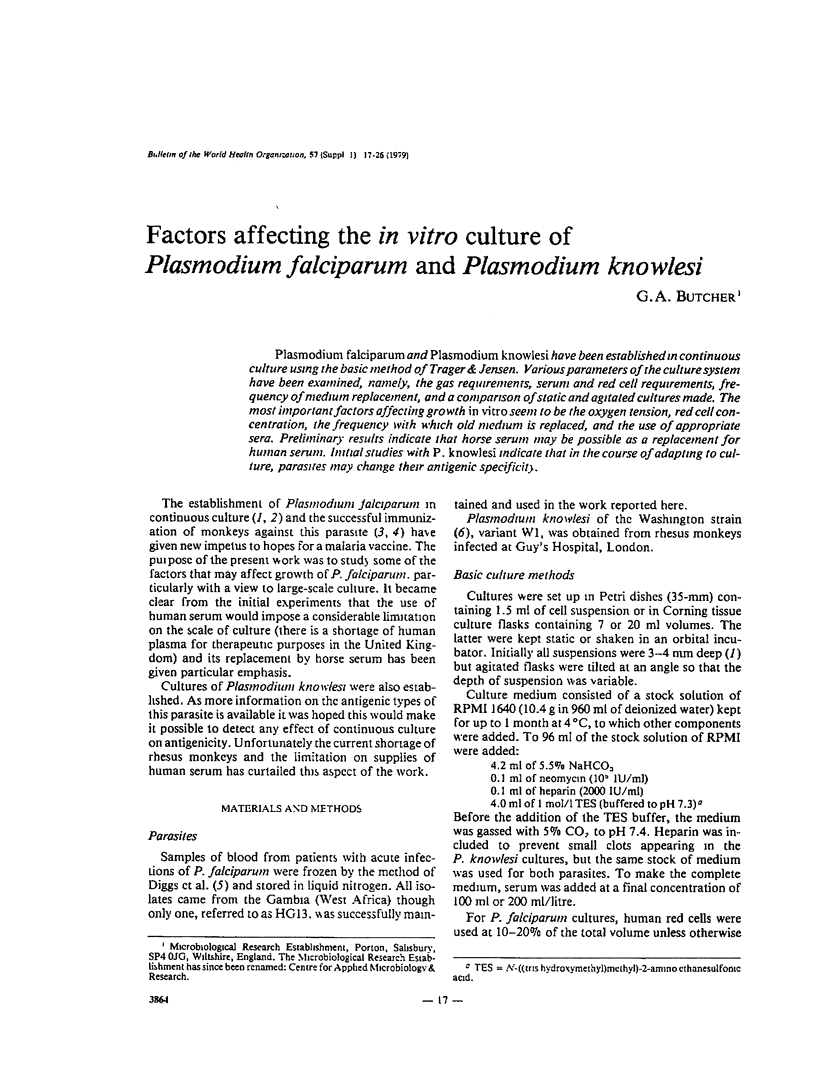
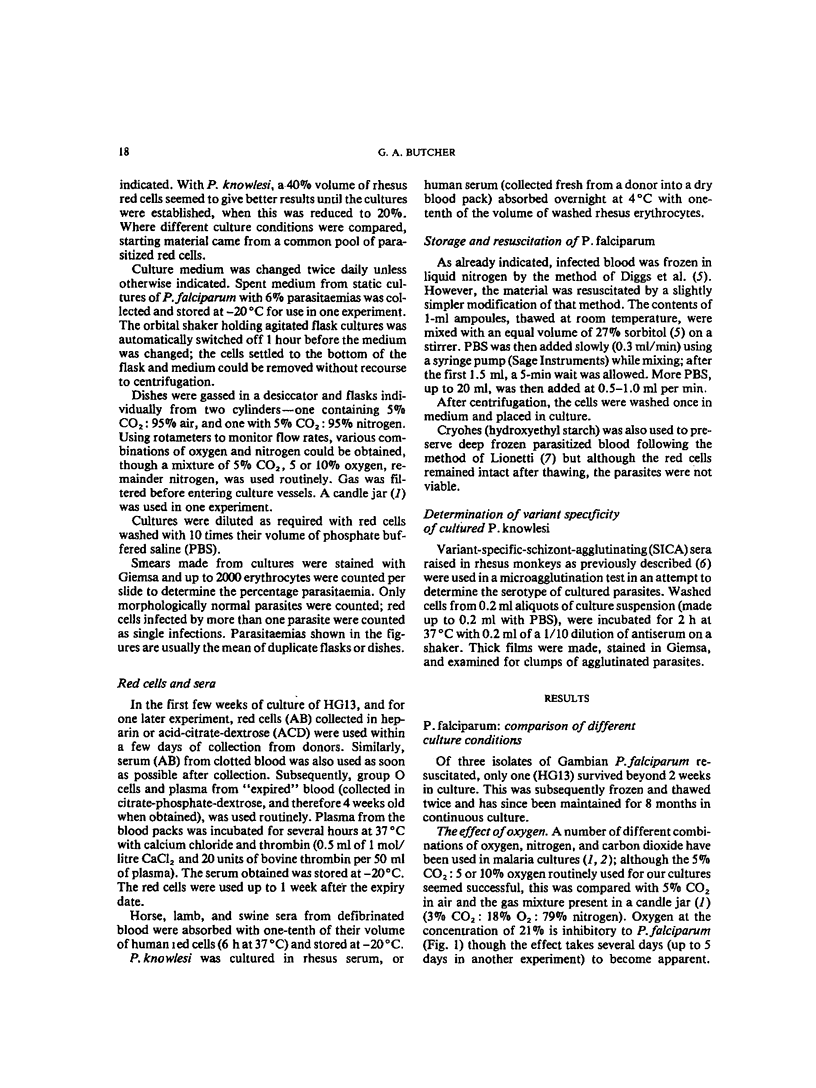
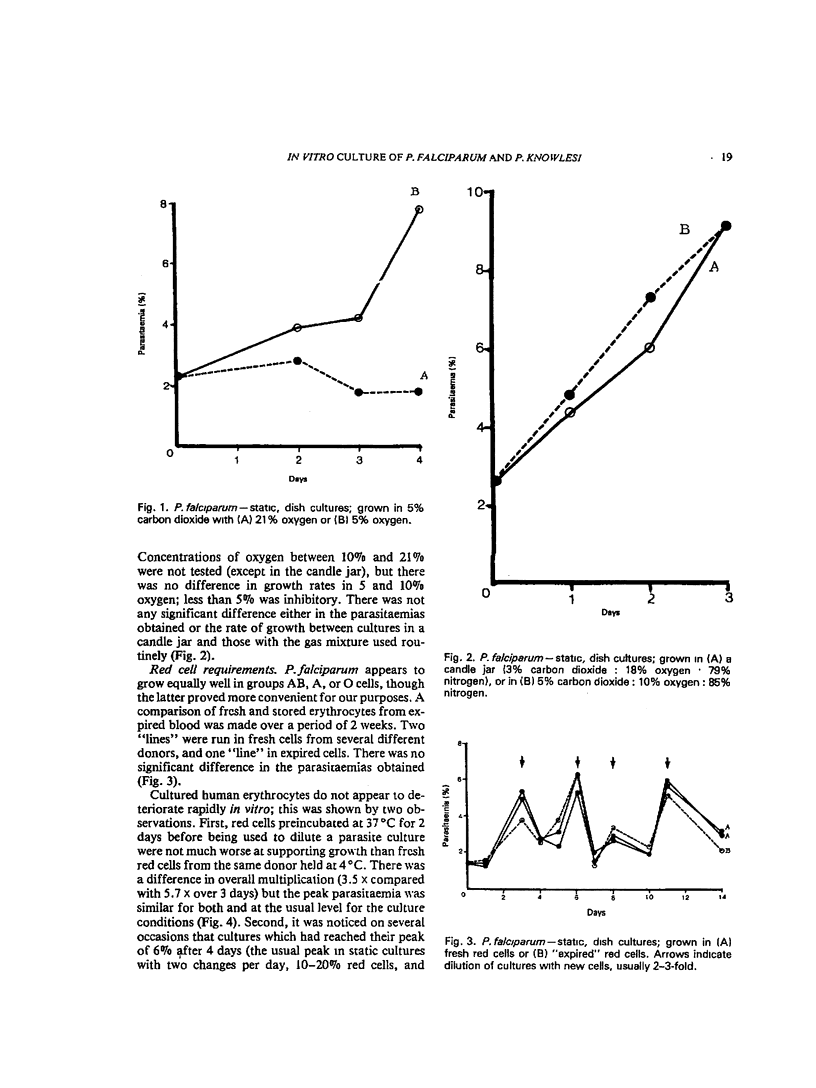
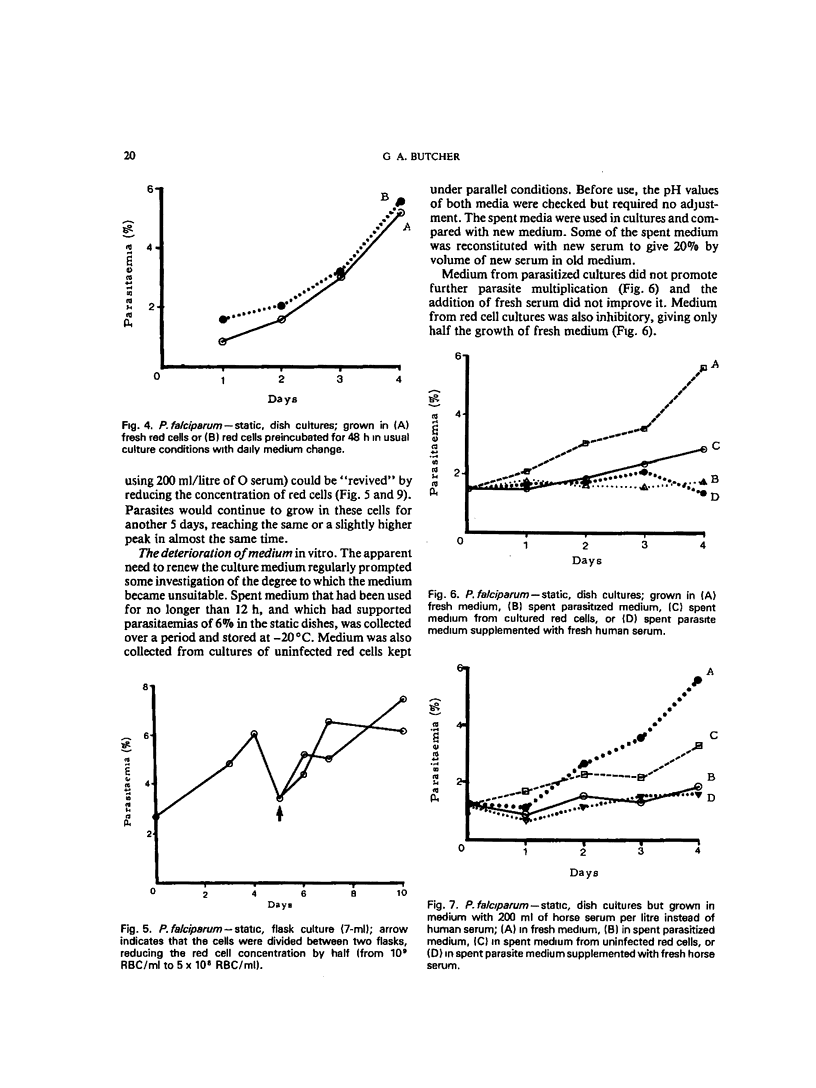

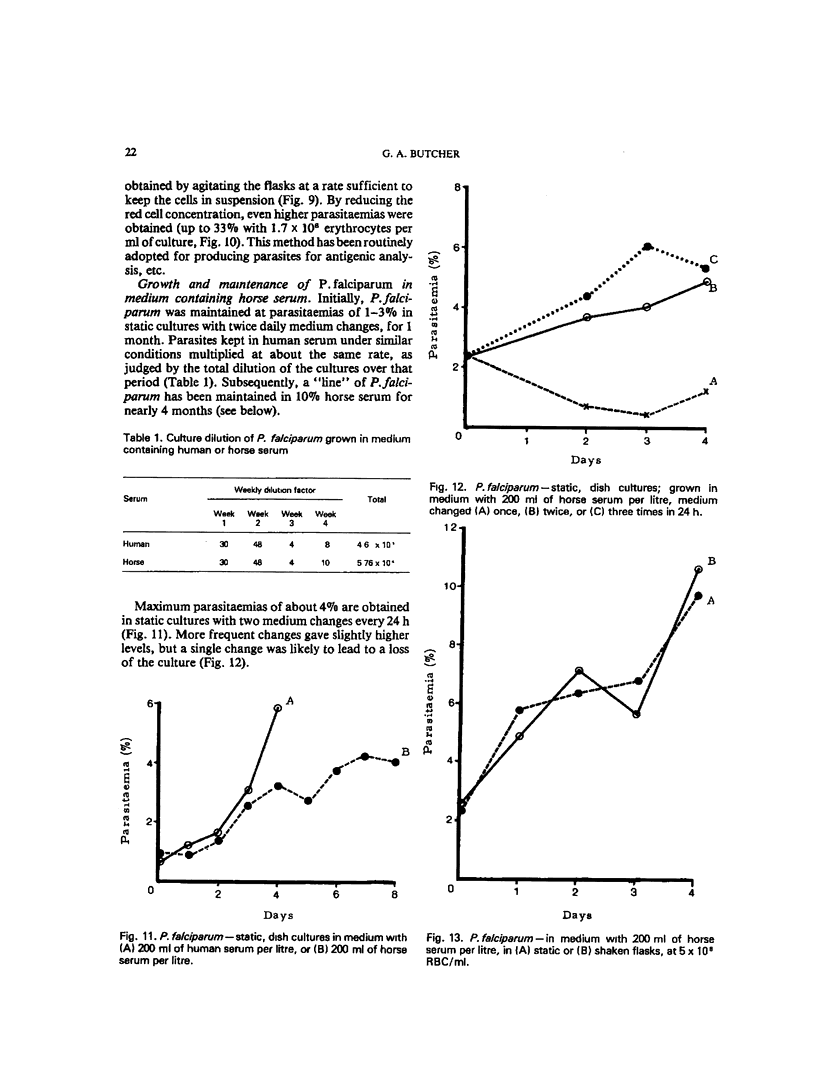
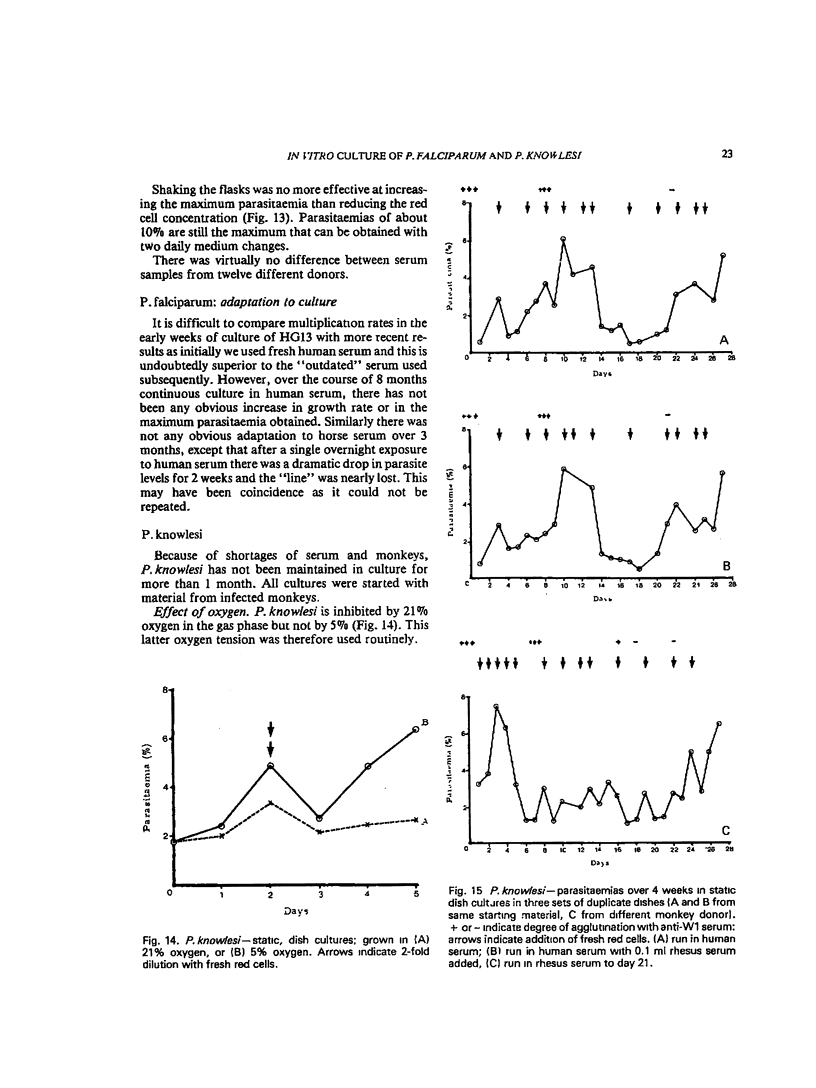
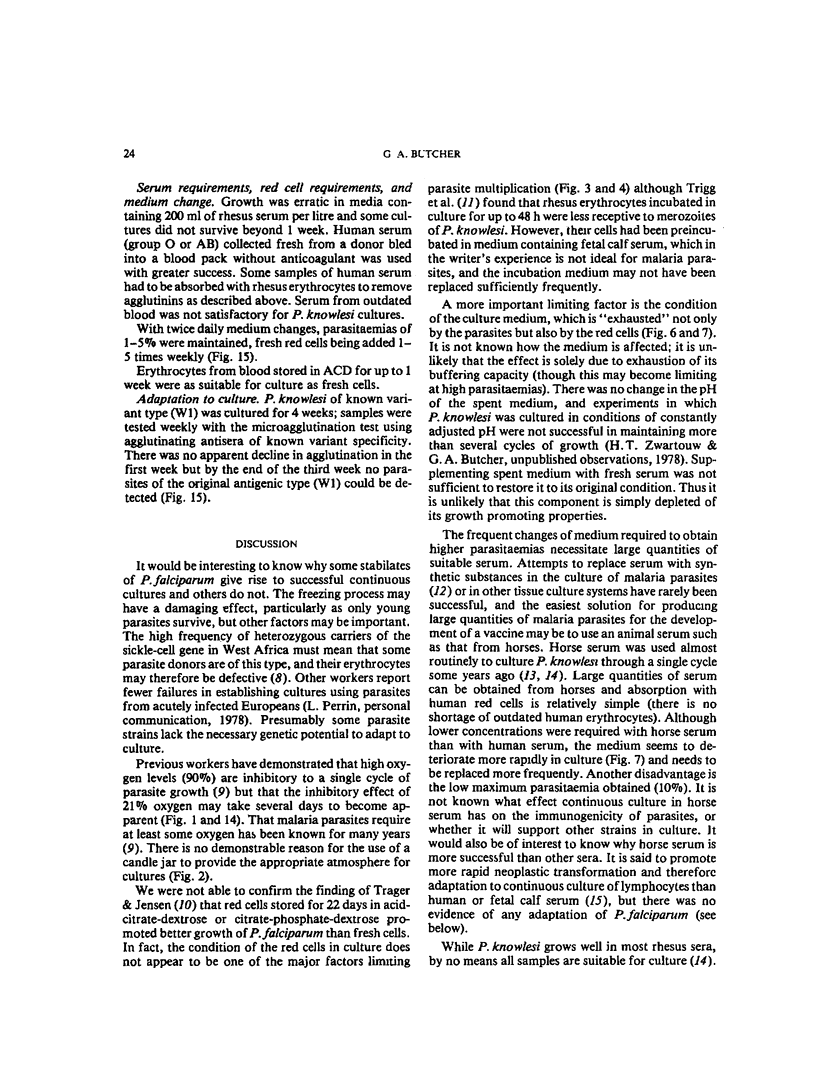
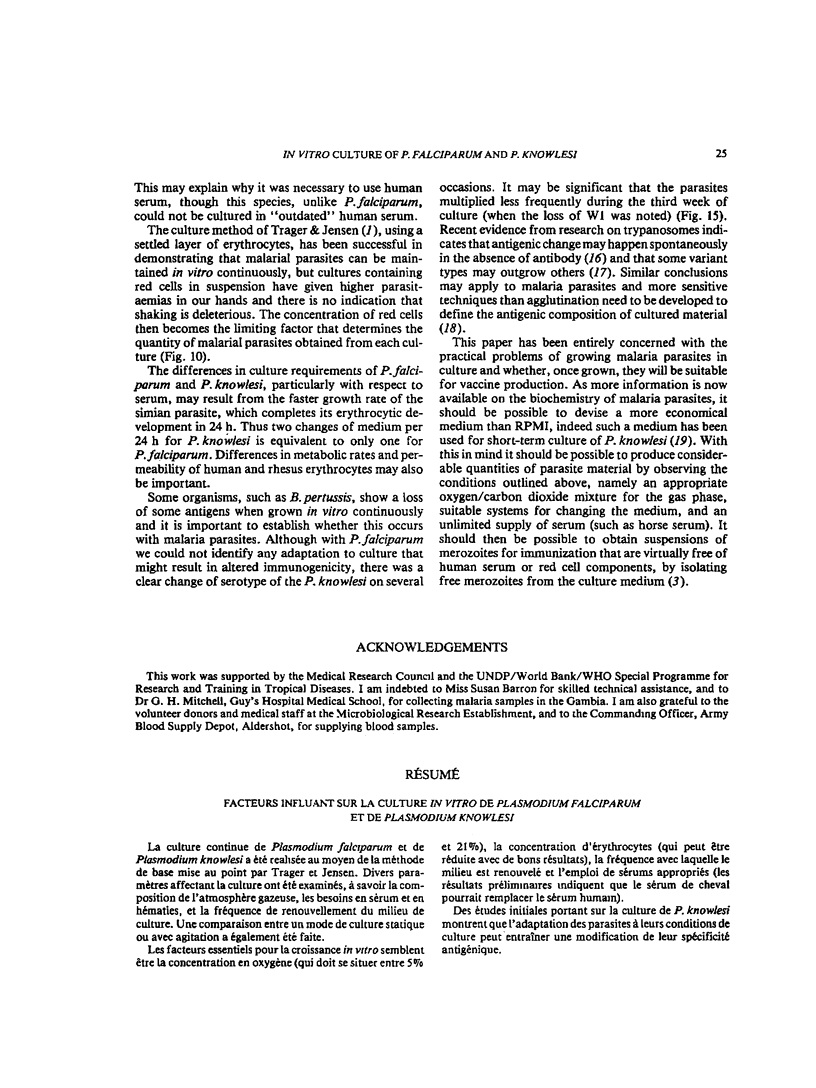
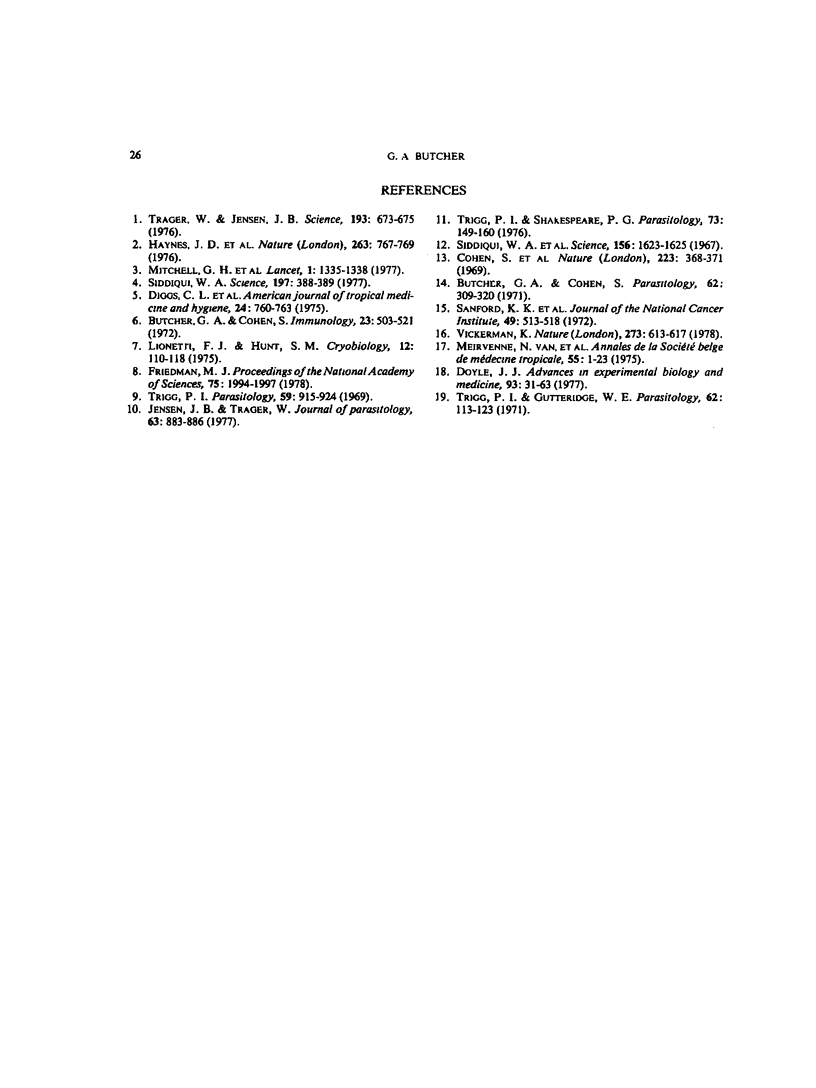
Selected References
These references are in PubMed. This may not be the complete list of references from this article.
- Butcher G. A., Cohen S. Antigenic variation and protective immunity in Plasmodium knowlesi malaria. Immunology. 1972 Oct;23(4):503–521. [PMC free article] [PubMed] [Google Scholar]
- Butcher G. A., Cohen S. Short-term culture of Plasmodium knowlesi. Parasitology. 1971 Apr;62(2):309–320. doi: 10.1017/s0031182000071547. [DOI] [PubMed] [Google Scholar]
- Cohen S., Butcher G. A., Crandall R. B. Action of malarial antibody in vitro. Nature. 1969 Jul 26;223(5204):368–371. doi: 10.1038/223368a0. [DOI] [PubMed] [Google Scholar]
- Haynes J. D., Diggs C. L., Hines F. A., Desjardins R. E. Culture of human malaria parasites Plasmodium falciparum. Nature. 1976 Oct 28;263(5580):767–769. doi: 10.1038/263767a0. [DOI] [PubMed] [Google Scholar]
- Jensen J. B., Trager W. Plasmodium falciparum in culture: use of outdated erthrocytes and description of the candle jar method. J Parasitol. 1977 Oct;63(5):883–886. [PubMed] [Google Scholar]
- Lionetti F. J., Hunt S. M. Cryopreservation of human red cells in liquid nitrogen with hydroxyethyl starch. Cryobiology. 1975 Apr;12(2):110–118. doi: 10.1016/s0011-2240(75)80002-2. [DOI] [PubMed] [Google Scholar]
- Mitchell G. H., Richards W. H., Butcher G. A., Cohen S. Merozoite vaccination of douroucouli monkeys against falciparum malaria. Lancet. 1977 Jun 25;1(8026):1335–1338. doi: 10.1016/s0140-6736(77)92551-x. [DOI] [PubMed] [Google Scholar]
- Siddiqui W. A. An effective immunization of experimental monkeys against a human malaria parasite, Plasmodium falciparum. Science. 1977 Jul 22;197(4301):388–389. doi: 10.1126/science.406671. [DOI] [PubMed] [Google Scholar]
- Trager W., Jensen J. B. Human malaria parasites in continuous culture. Science. 1976 Aug 20;193(4254):673–675. doi: 10.1126/science.781840. [DOI] [PubMed] [Google Scholar]
- Trigg P. I., Gutteridge W. E. A minimal medium for the growth of Plasmodium knowlesi in dilution cultures. Parasitology. 1971 Feb;62(1):113–123. doi: 10.1017/s0031182000071328. [DOI] [PubMed] [Google Scholar]
- Trigg P. I., Shakespeare P. G. The effect of incubation in vitro on the susceptibility of monkey erythrocytes to invasion by Plasmodium knowlesi. Parasitology. 1976 Oct;73(2):149–160. doi: 10.1017/s0031182000046837. [DOI] [PubMed] [Google Scholar]
- Van Meirvenne N., Janssens P. G., Magnus E. Antigenic variation in syringe passaged populations of Trypanosoma (Trypanozoon) brucei. 1. Rationalization of the experimental approach. Ann Soc Belg Med Trop. 1975;55(1):1–23. [PubMed] [Google Scholar]
- Vickerman K. Antigenic variation in trypanosomes. Nature. 1978 Jun 22;273(5664):613–617. doi: 10.1038/273613a0. [DOI] [PubMed] [Google Scholar]


